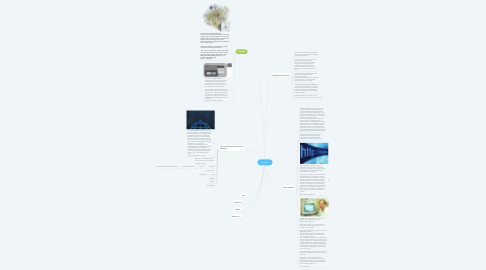Invention
by Sarah Gavra Boland


1. Describe your invention
1.1. The Internet is used by Billions of people all around the world but not many people understand how it works.
1.2. The internet or 'The Net', is a massive network of computers that hold information and technology tools that anyone can access with an Internet connection. The computers in the network are linked using the Internet Protocol suite (TCP/IP) to talk to each other.
1.3. Every Sector uses the Internet like Private, public, schools, businesses, and government networks. The devices on the network are connected by lots of electronic, wired or wireless optical networking technologies.
1.4. The Web or World Wide Web/ WWW is the most used part of the Internet. It contains lots of documents with links to one another. A website is made up of lots of individual web pages or/documents linked together under one domain.
1.5. HTTP means HyperText Transfer Protoco https://www.webopedia.com/TERM/H/HTTP.htmll
2. Who invented it
2.1. in a 1969 two research teams at UCLA and Stanford College in the USA attempted to connect long-distance networking between computers. The system crashed the first time they tried. Leonard Kleinrock, succeeded in the first test of “packet switching,” sending data between two computer systems. Packet switching separates information into smaller “packets” of data that are then transported across multiple different channels and reassembled at their destination. We use this to send an email to someone, instead of needing to establish a connection with the recipient before you send. The email is broken up into packets and can be read once all of the packets have been reassembled and received.
2.2. In 1980 Vinton Cerf and Bob Kahn who were computer scientists in America invented the Internet communication protocols we use today and the Internet.
2.3. They created the guidelines for TCP/IP, or Transmission Control Protocol and Internet Protocol. The TCP part involved how you pack up the data before you send it and how it is unpacked once it has arrived. The IP tracks and maps the movement of data from its start point to its endpoint. It took 11 years from when Kleinrock’s experiment proved that a single network between two computer systems was possible, Cerf and Kahn’s TCP/IP provided the large web of connected networks “Internet.” Other protocols were developed and used before TCP/IP, such as the file transfer protocol (FTP) and network control protocol (NCP), the Internet as we know it today is built on the basis of Cerf and Kahn’s “network of networks.” Who Invented the Internet?
2.4. In March 1989 Sir Tim Berners-Lee wrote the proposal for the WWW “Information Management: A Proposal” By October of 1990, Tim had written the three fundamental technologies that remain the foundation of today’s web. HTML: HyperText Markup Language. The markup language for the web. URI or URL Uniform Resource Identifier is the “address” that is unique and used to identify each resource on the web. HTTP: Hypertext Transfer Protocol. Allows for the retrieval of linked resources from across the web. Tim also wrote the first web page editor/browser (“WorldWideWeb.app”) and the first web server (“httpd“). By the end of 1990, the first web page was served on the open internet, and in 1991, people outside of CERN were invited to join this new web community. Tim always wanted anyone, anywhere could use the web without paying a fee or having to ask for permission. He explains: “Had the technology been proprietary, and in my total control, it would probably not have taken off. You can’t propose that something be a universal space and at the same time keep control of it.” History of the Web
3. why you think this invention is so important
3.1. It is almost impossible to imagine a world without the internet. The simplest activities such as communication and entertainment rely heavily on the internet. The internet, based on its definition, connects different computers and users. Today, the internet does more than just connecting computers. The internet connects people, lives, stories, and businesses. It is a source of information, a social platform, and a business network. The internet has diverse uses depending on the needs of an individual or the setting. Regardless of the purpose, the importance of the internet in our daily lives is unquestionable. Read more: Importance of Internet in Our Life
3.2. We are all now connected by the internet,like neurons in a giant brain - Stephen Hawking
3.3. Education
3.3.1. research
3.3.1.1. access for all to learn
3.3.1.1.1. accessibility tools to support all learners
3.4. Entertainment
3.5. Work
3.5.1. Remote work
